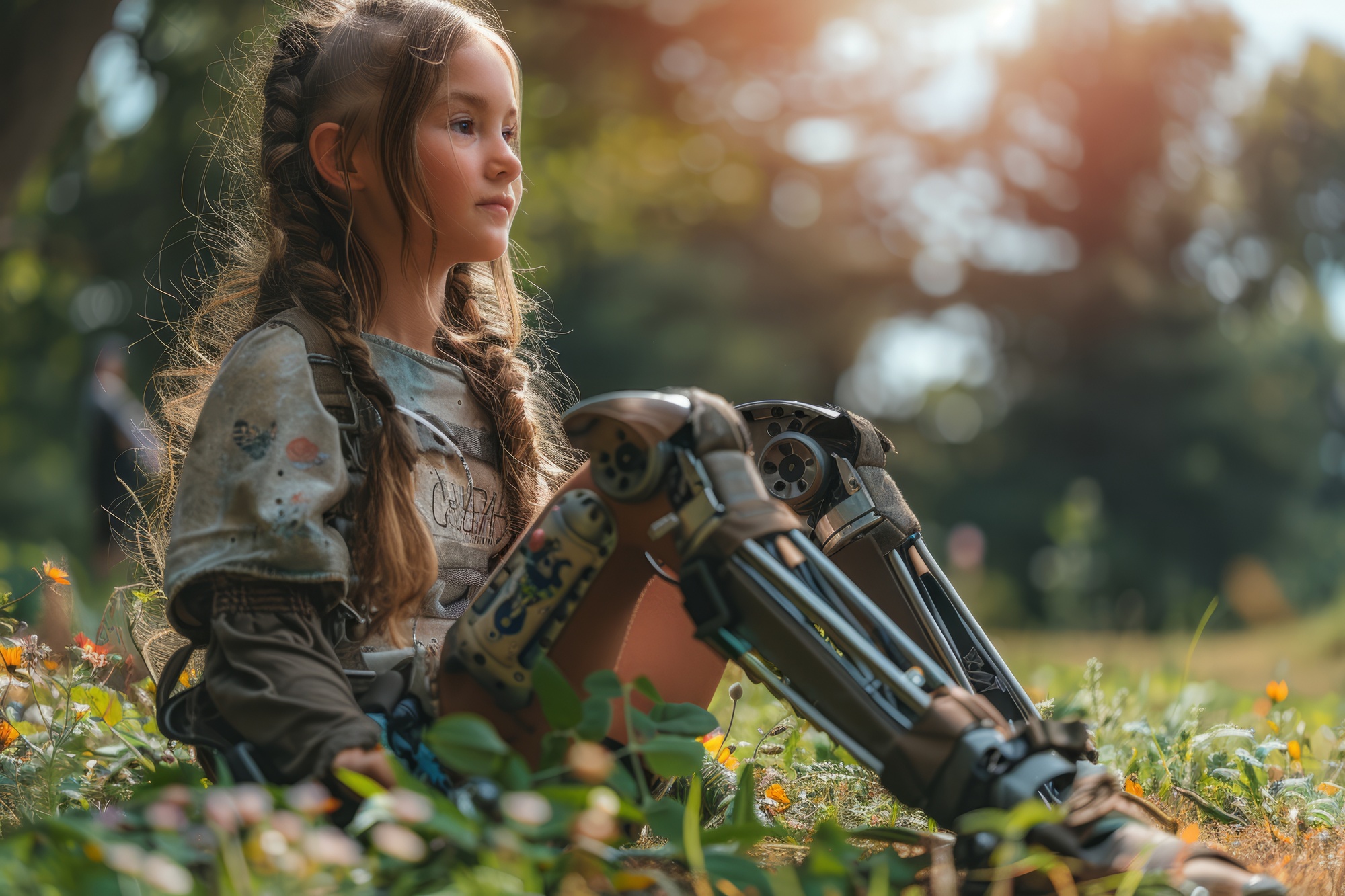Login
Signup
donations for children’s prosthetic

Children Deserve to Play:donations for children’s prosthetic
Children, the beautiful flowers of life, deserve to experience the joy and happiness of childhood. But for some of these little angels, life has taken a different path. Amputation poses a significant challenge in their lives. Imagine a child who should be playing with their friends, being deprived of childhood games due to the lack of a proper prosthesis. Or a teenager who dreams of independence, unable to achieve their dreams because of physical limitations. With your help, we can bring a smile back to these children’s faces. Every donation, no matter how small, can help provide a suitable prosthesis for these children. By donating, you are giving these children the opportunity to run, jump, and enjoy life again.
Why is your donation important?
-Reducing financial burden on families: The cost of a prosthesis can be a significant financial burden for many families.
-Improving quality of life: With a proper prosthesis, children can easily perform their daily activities and become more independent.
-Boosting self-esteem: A suitable prosthesis helps children regain their self-confidence and participate more confidently in society.
-Focus on long-term impact:“By providing these children with the tools they need to thrive, we are not only improving their physical abilities but also empowering them to reach their full potential in education, careers, and personal relationships.””Investing in these children today means investing in a brighter future for our community.”
-Highlight the emotional impact:“Imagine the joy of a child taking their first steps with a new prosthesis, or the confidence that comes with being able to play sports and participate fully in school activities.””Every donation brings hope and restores a sense of normalcy to these children and their families.”

The world of pediatric prosthetics, much like that of adults, is boundless and full of hope. Children, just like their adult counterparts, often require prosthetics due to conditions such as amputation resulting from illness, trauma, or congenital defects.
However, the types of prosthetics used for children differ significantly from those used for adults, making the selection process quite complex. But why is finding and fitting the right prosthesis for children so challenging?
Children, like adults, have the right to live life to the fullest. Therefore, in this article, we aim to provide comprehensive information about pediatric prosthetics and evaluate the obstacles involved in selecting the appropriate prosthesis.
Pediatric prosthetics are designed to replace missing body parts in children, helping them move, play, and gain independence. Here are some common types:
-Body-powered prosthetics: These use the child’s own body movements, such as shoulder or chest movements, to control the prosthetic limb. They are often a good starting point for younger children.
-Myoelectric prosthetics: These use electrical signals from the child’s muscles to control the prosthetic limb. They offer more precise and natural movement but may require more training and adjustment.
-Passive prosthetics: These are simpler devices that primarily focus on improving the appearance of the limb. They may have limited functionality but can be helpful for cosmetic purposes or as a first step towards more complex prosthetics.
The specific type of prosthetic will depend on the child’s individual needs, age, activity level, and the location and extent of the limb difference.
What are the challenges in providing prosthetics for children?
Selecting a suitable prosthesis for children that matches their abilities and capabilities is by no means a simple task. In the following, we will examine some of the most important obstacles:
Age
Most prosthetics are designed for individuals who have reached physical and mental maturity. As children grow, we witness an increase in age, cognitive maturity, body size, and physical abilities. A toddler with an upper arm amputation cannot understand how to use a hand prosthesis correctly.
Similarly, an infant born without a below-knee limb will not need a below-knee prosthesis. Two important factors must be considered when selecting a prosthesis for a child:
The child’s age
The environment in which the child grows up
Additionally, the child’s level of mobility should be considered when choosing a prosthesis, such as which of the crawling, standing, walking, or running abilities the child with the amputation has lost. In general, for children with a lower limb amputation, a prosthesis is not typically chosen until they start trying to stand and progress through each stage of walking. Finally, a prosthesis for children will be chosen that closely resembles a natural limb. Of course, the same process is considered for prosthetics for other body parts.
Size
Size is not only a problem but also a fundamental challenge when it comes to pediatric prosthetics. The design process for prosthetics typically involves creating various types for adults and evaluating their performance. These adult prosthetics are then adapted in different sizes for children. The emphasis on adult prosthetics is largely due to the vast number of prosthetics designed for adults. However, this doesn’t negate the need for specialized prosthetics for children. As previously mentioned, pediatric specialists often have to modify adult prosthetics to fit the needs of children. This requires a high level of expertise and skill. Although adult prosthetics come in various sizes, adapting these sizes to children’s needs is not always feasible. Furthermore, there are concerns about the improper growth of other body parts in children due to the use of non-standard adult prosthetics, which limits the use of pediatric prosthetics.
Child Growth
Even if an adult prosthesis successfully helps a child with a limb difference, there’s no guarantee that the child will be able to use it for an extended period. Children are constantly growing, and their bones change both in length and width. As a result, pediatric prosthetics must be regularly adjusted or replaced, which can be costly for parents. While an adult may only need one prosthesis over a decade, children may require several during the same period. Each new prosthesis likely necessitates adjustments, creating another obstacle for children.
Did you know that with your help, we can transform the lives of children with limb differences?
Children R Future is a non-profit organization that assists children with special needs and disabilities, including those with limb differences. The organization provides financial support, medical equipment, and therapeutic services to improve the quality of life for these children.
Why should you support Children R Future?
-Providing medical equipment: Supplying suitable prosthetics for children with limb differences is costly. With your help, we can cover these costs and enable children to move and be active.
-Improving quality of life: By offering therapy and rehabilitation services, we can help children become more independent and participate actively in society.
-Inspiring hope: By supporting these children, we show them that they are not alone and that society cares about them.
-Together we can create a better world for children.“
Investing in a Brighter Future
By supporting the holistic development of children with limb differences, we empower them to:
Pursue their passions: Whether it’s sports, academics, or the arts, your support helps children achieve their dreams without limitations.
Become independent and self-reliant: By developing essential life skills and coping strategies, children can navigate challenges with confidence and resilience.
Grow into successful and fulfilled adults: Your contribution lays the foundation for a brighter future, filled with opportunities and possibilities.
Join us in making a lasting impact on the lives of children with limb differences.
Together, we can create a world where every child, regardless of their physical abilities, has the opportunity to thrive.